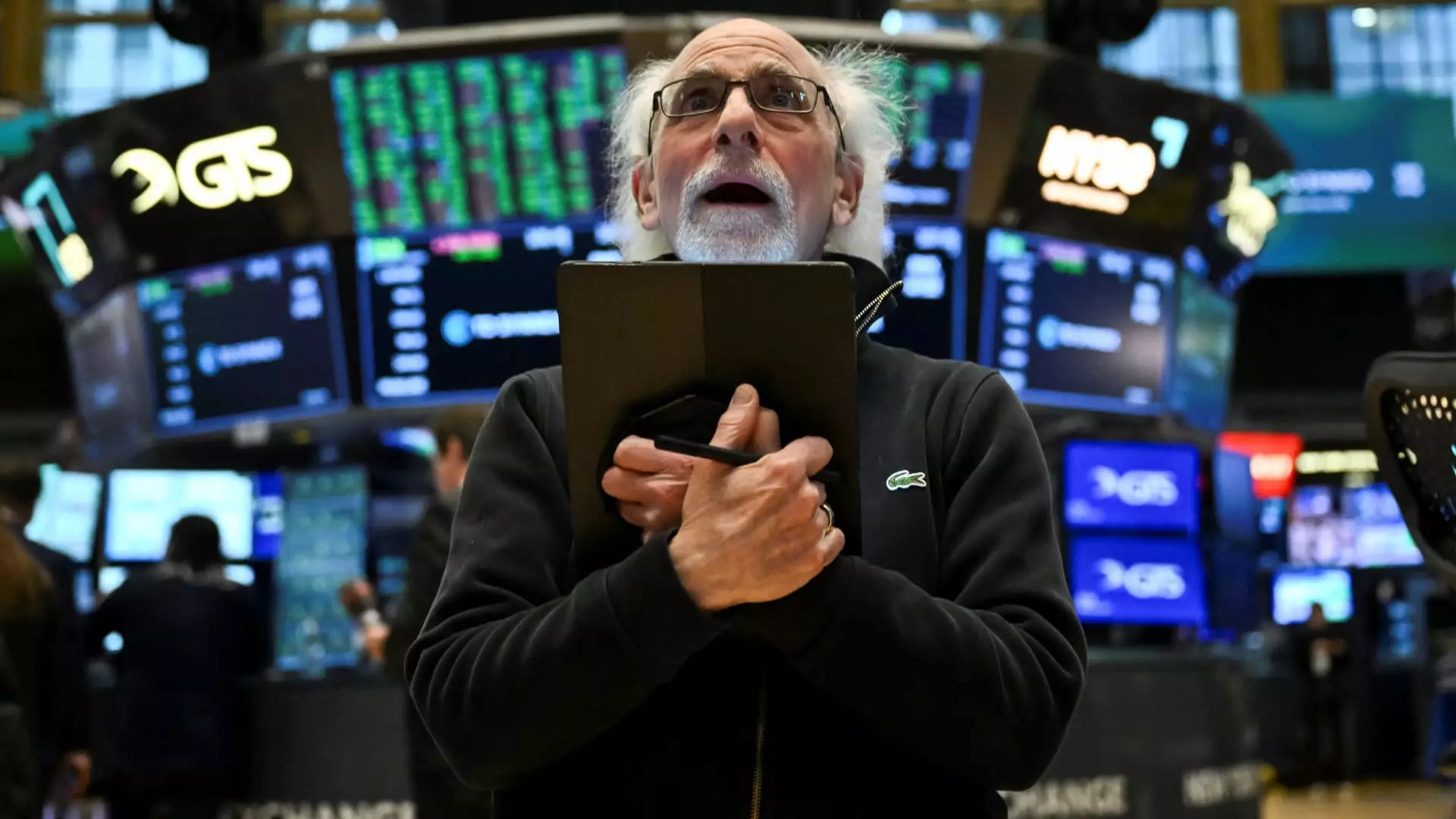The stock market is notorious for its volatility, but few events showcase this volatility like a massive short squeeze. Recent trading activity on Wall Street illuminated the risks inherent in short selling, especially when traders believe they are betting against a declining market. As hedge funds entrenched themselves in short positions, news of a respite from harsh tariffs caused a seismic shift. Stocks exploded in value, leaving those who had bet against them scrambling to salvage their losses. This dramatic turnaround serves as a cautionary tale about the precarious nature of investment strategies dependent on betting against others.
In the wake of President Trump’s unexpected announcement regarding tariffs, a surge by short sellers in the marketplace amplified an already unpredictable situation. Hedge funds had amassed an unprecedented number of short positions, convinced that the market would continue to underperform. They borrowed shares and subsequently sold them with the intent of purchasing them back at lower prices. However, a sudden surge in stock prices forced these traders to act quickly, resulting in an unprecedented number of buybacks.
This phenomenon exemplifies the mechanics behind what we term a “short squeeze.” As prices rose, short sellers were compelled to buy stock at inflated prices to minimize their losses, thereby triggering further price increases in an upward spiral. The real question we must ask ourselves as investors and observers is: Are short selling strategies merely gambling in a high-stakes game, or do they represent a flawed understanding of market trends?
Beneath the Surface: Analyzing the Short Selling Strategy
While short selling may appear a rational approach to those anticipating market downturns, it is inherently risky and often exposes investors to significant downsides. The sheer volume of short positions—almost double that of early 2020 when the COVID pandemic struck—served as a reminder of how hubris can blind investors to the realities of market dynamics. Multiple traders cited this level of short positioning as symptomatic of a more profound paranoia plaguing the financial landscape.
It’s crucial to recognize that while hedge funds and similar entities have sophisticated models to forecast market movements, they can be equally susceptible to groupthink and overconfidence. When traders collectively lock themselves into a bearish perspective, it creates echo chambers where dissenting voices are drowned out. This mass enthusiasm for short selling can often lead to catastrophic results, particularly in a rapidly changing environment influenced by geopolitical factors.
As highlighted by the staggering increase in U.S. stock volumes, the marketplace can swing dramatically when conditions shift. Traders who find themselves on the wrong side of the trend are often forced into panic-based decision-making, which can exacerbate price movements further. It’s this sentiment that raises questions about the effectiveness of short selling as a strategic investment practice.
The Role of Market Liquidity
Our understanding of liquidity—especially during trying times—also plays a significant role in market movements like the one witnessed recently. The diminishing liquidity in the market accentuates volatility and creates an environment ripe for exaggerated price shifts. With the total trading volume in U.S. exchanges hitting record highs, we see the power of liquidity not merely as a measure of health in the market but also as a catalyst for significant fluctuations.
As traders realize the precarious nature of their positions, they may be reluctant to liquidate their holdings out of fear of triggering further upheaval. This creates an environment fraught with anxiety, where well-informed trading becomes overshadowed by knee-jerk reactions. The interplay between liquidity and trader behavior highlights the fragility of even the most straightforward investment strategies, turning a candle’s flicker into an inferno in moments.
Acknowledging the Continued Risks Ahead
As the market oscillates between optimism and caution, it is crucial for investors to remain vigilant. The tendency for hedge funds to maintain substantial short positions means that more volatility looms in the future. With the threat of renewed tariffs and ongoing negotiations, traders are left contemplating the sustainability of their strategies. This dynamic is not merely an academic exercise; it impacts not just hedge funds but also day-to-day investors who are subject to the cascading effects of these decisions.
Thus, while moments like the recent short squeeze may indeed flip the script temporarily, they underscore a deeper tension between market expectations and economic realities. The lessons from this episode must not be overlooked, for they reveal the often counterintuitive and unstable nature of finance. As the saying goes, one can never truly predict markets—they merely respond, sometimes dramatically, to the whims of fear, greed, and the broader economic landscape.


Leave a Reply